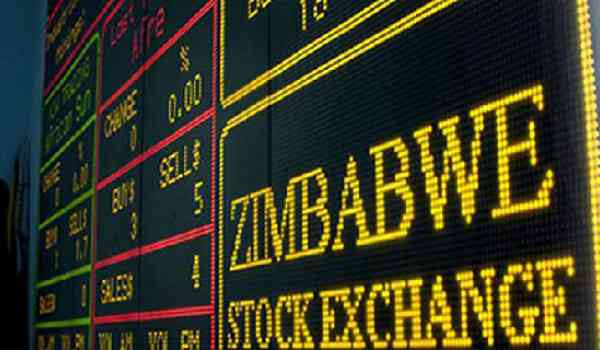
Come to think of this, prior to 2020, Zimbabwe had only one stock exchange — the Zimbabwe Stock Exchange (ZSE). Established in 1894 as the Salisbury Stock Exchange, the ZSE initially operated under a manual “open outcry” system. This required stockbrokers to be physically present at the trading floor to buy or sell securities. Investors used to receive physical share certificates as proof of share ownership.
Over time, the market evolved. On July 6th, 2015, the ZSE replaced the open outcry system with the automated trading system (ATS), allowing stockbrokers to monitor and execute trades virtually. This advancement eliminated the need for physical attendance during call over sessions.
To further modernise the market, Chengetedzai Depository Company (CDC) was established in 2010 and went live in September 2014.
The CDC serves as Zimbabwe’s central securities depository, replacing physical share certificates with an electronic registry for various instruments, including shares, bonds, debentures, and derivatives.
As of April 14, 2025, settlement cycles have been shortened from T+3 to T+2 days, meaning investors now receive proceeds from share sales within two working days.
For example, selling shares on a Wednesday now results in payment by Friday, as opposed to the previous Monday.
Activity on the ZSE has continued to decline, with asset managers increasingly shifting their portfolios from equities to alternative asset classes like property, aiming to preserve capital amid the bourse’s prolonged underperformance in recent years. Meanwhile, the VFEX has faced persistent liquidity challenges since 2020, largely driven by a loss of public confidence in the financial system, prompting many to favour mattress banking over formal banking channels.
The CDC hosted the inaugural Securities Lending and Borrowing (SLB) conference in November. Today, SLB operates under a regulatory sandbox, undergoing refinements to ensure investor protection.
- CDC to implement US dollar settlements
- Chengetedzai seeks to centralise employee ownership schemes
- CDC stuck with US$4,5m unclaimed shares
- Huge progress in reducing unclaimed shares
Keep Reading
So how does SLB works?
SLB involves an intermediator, lending agents (typically stockbrokers), connecting lenders and borrowers of securities through the depository similar to how banks channel funds from surplus units (depositors) to deficit units (borrowers), lending agents facilitate securities lending. Lenders, typically institutional investors such as pension funds and insurance companies, lend securities in return for a fee.
Borrowers are often market participants such as arbitragers, market makers, and short sellers who pledge collateral in exchange for borrowed securities.
A common use of SLB is for short selling, a strategy where an investor sells securities they don’t own, expecting the price to drop.
The investor borrows the securities, sells them on the market, and later buys back identical ones at a lower price to return to the lender.
Notably, borrowers are not required to return the exact same securities by registration number. Instead, they must return securities that are "wholly equivalent" in terms of value, maturity, and quantity.
Collateral in our context include US dollars, Zimbabwean gold, other securities, and soon potentially Treasury Bills (TBs).
Discussions are still ongoing about allowing additional asset classes, such as property, to be accepted as collateral. The required collateral ranges from 1.2x to 1.5x the value of the borrowed securities.
The depository performs daily mark to market assessments to track the value of collateral against the borrowed securities.
If the coverage falls to 1.2x, the borrower will be contacted to top up their collateral.
If not, the existing collateral may be liquidated to repurchase and return the securities to the lender.
Collateral pledged is usually reinvested, with the interest earned reflected in the mark to market valuations.
SLB transaction models
There are two primary models for conducting SLB transactions: the Bilateral Model and the Screen-Based Model.
In the Bilateral Model, lenders and borrowers enter into direct agreements.
They may meet in the market and then approach the depository to formalise the transaction through a contract that outlines key terms such as the securities being lent, the quantity, duration, and applicable lending fee.
The depository is currently advocating for collateral requirements to be waived under this model, particularly in cases where the lender and borrower are affiliated entities, such as sister companies.
On the other hand, the Screen-Based Model facilitates transactions electronically through the Automated Trading System, the same way trades are matched with brokers being in different locations.
Analyst commentary
SLB presents a compelling opportunity for Zimbabwe’s capital markets, by offering a way for investors, pension funds and asset managers an opportunity to earn extra returns by lending securities, even while retaining rights to dividends during the lending period.
SLB can increase participation from institutional lenders and stimulate market activity which has been on a downtrend. Enhanced competition in lending could also lead to improved pricing mechanisms.
For borrowers, SLB opens avenues to exploit market inefficiencies through arbitrage, market making, and short selling. Like traditional credit markets, borrowers assume risk but gain potential upside from informed and strategic market plays.
In conclusion, SLB serves as both a market deepening tool and a new investment strategy for Zimbabwe’s evolving financial landscape. With continued education, awareness, and regulatory support, SLB could become a transformative force in enhancing market liquidity, investor returns, and overall confidence in Zimbabwe's capital markets.
- Taimo is an investment analyst with a talent for writing about equities and addressing topical issues in local capital markets. He holds a First Class Degree in Finance and Banking from the University of Zimbabwe. He is an active member of the Investment Professionals of Zimbabwe community, pursuing the Chartered Financial Analyst charter designation.






